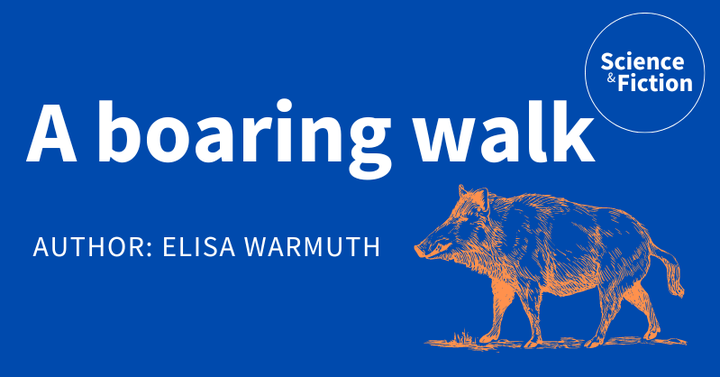
An unusual encounter during a walk home in Rome.
Content warnings
None
The short story
I stepped out into the brisk air; the sun had just begun to set, and I chose to walk home instead of taking the bus. The bus only shows up seldom and on no occasion on time. The outskirts of Rome are not what you experienced if you ever walked cobblestone streets and narrow alleys in the center. In fact, they are quite the opposite. Large multi-lane roads, vast fields covered in weeds alongside massive malls, sidewalks just ending abruptly. But I wanted to move my feet, since I had a challenging day at the lab.
My backpack was a bit heavy, since I was carrying a supernumerary robotic limb that the lab had instructed me to discard as it was not functioning properly anymore. I did not as I was told. Instead, I spend a few more hours to incorporate vibrotactile feedback into the limb. Vibrating feedback to enhance the control of its movements. I had not managed to finish it completely, so I wanted to take it home to finish it.
After walking for some time, I turned a corner. Startled by a rustling sound, I stopped walking. By now, the sun had set, the way only lit by a dimly, flickering streetlight. I heard a grunt. In then I saw it. In the middle of the road, there was a figure. The imposing silhouette of a wild boar. Fear surged through my veins. I felt my heart pumping, my hands became sweaty. Blood rushing through my ears. I recalled stories of these formidable creatures that occasionally wandered into the city. My mind went blank.
Tried to calm myself down. What was the correct reaction to wild boars? Running away? Laying down on the floor like flat bread? Suddenly I remembered carrying this seemingly useless object in my backpack – the supernumerary robotic limb. But it does not even work properly. Well, I had no time to think about that. I took it out, and with my shivering fingers managed to put it on my upper body. I felt the vibrations on my arm, I was ready to defend myself and I looked up, but wait…
The boar had already begun to retreat. In the distance its silhouette was getting smaller and smaller. The beast hadn’t even spared me a glance, my grand moment of biohacking had gone entirely unnoticed in its wild, boarish world. I couldn’t help but chuckle. It was absurd. I continued my homeward journey, ambling through the labyrinthine streets, robotic limb still on my torso, its vibrational hum still in my arms.
This story was originally written in English.
The paper
Buratti, S., Deiana, D., Noccaro, A., Pinardi, M., Di Pino, G., Formica, D., & Jarrassé, N. (2023). Effect of Vibrotactile Feedback on the Control of the Interaction Force of a Supernumerary Robotic Arm. Machines, 11(12), 1085. https://doi.org/10.3390/machines11121085
Connection between story and paper
Supernumerary robotic limbs are additional limbs that are designed to augment physical capabilities beyond human abilities. They are used to assist in workspaces when both hands are occupied. For example, they can be mounted on the user’s shoulders for ceiling work and thus help to minimize injuries and long-term fatigue. They normally provide only visual and haptic feedback on the body, but this paper looked at the possibility of adding vibrotactile feedback. The vibrotactile sensation gave feedback to the force that was applied on the robotic limb by the environment. The participants then had to accomplish a force-regulation task with the supernumerary robotic arm. The vibrotactile feedback was placed on the biceps of the arm and it allowed the participants to exert force faster, longer and with less errors.
The idea of the short story evolved in my head during my internship at NEXTlab (Neurophysiology and Neuroengineering of the Human-Technology Interaction) at the Università Campus Bio-Medico di Roma. At the same time, it acts as a valve for my frustration with the chaotic urban landscape of the roman outskirts.
The author
Elisa is working on finishing her Masters in psychology and working as a student research assistant at the Social Cognitive and Affective Neuroscience (SCAN) Unit at the University of Vienna. Her goal is to explore the intersection of psychology, neuroscience and science communication. She also takesa lot of walks.